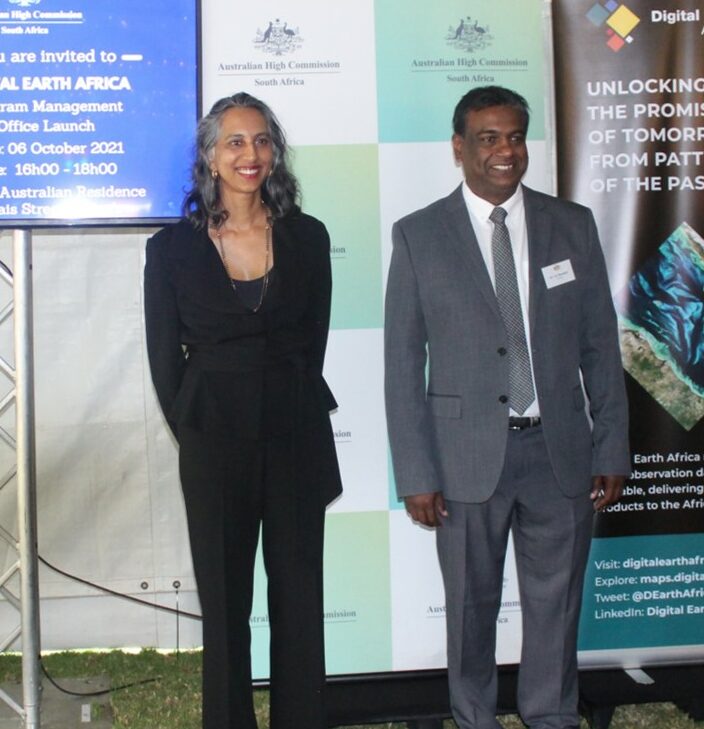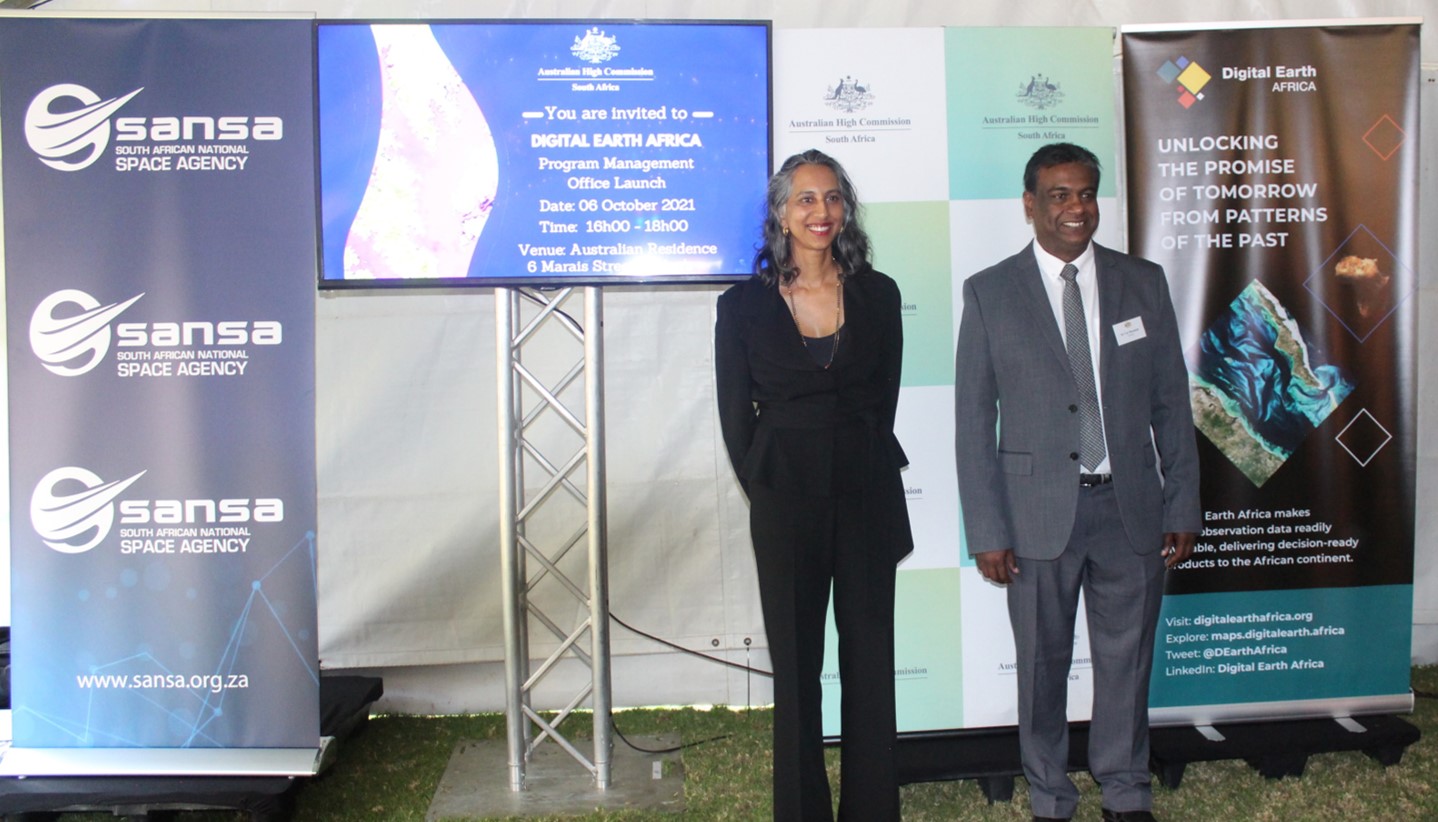
October 7, 2021

Pretoria, 6th October 2021
Digital Earth Africa is delighted to celebrate the appointment of the South African National Space Agency (SANSA) as its Program Management Office.
The milestone was marked by a launch event, hosted by the Australian High Commission in Pretoria during World Space Week, with members of the diplomatic community, government, scientists and researchers in attendance.
Australian High Commissioner, HE Gita Kamath said: “The appointment of the South African National Space Agency as the host of the Digital Earth Africa Program Management Office is a wonderful example of what can be achieved through collaboration between Australia and South Africa in the fields of science and technology.”
Dr Lisa Hall, Managing Director of the Digital Earth Africa Establishment Team said: “It has always been fundamental for Digital Earth Africa to become fully operational in Africa, and an Africa-based PMO allows us to tailor our platform even more to the needs of our users. The appointment of SANSA as PMO host also signals an important step towards the complete transition of Digital Earth Africa to be owned and run by African organisations and stakeholders.”
Digital Earth Africa makes Earth observation (EO) data readily available, delivering decision-ready products to the African continent. With free and rapid access to the data they need, policymakers, scientists, the private sector and civil society can innovate to address social, environmental and economic changes across the continent and respond effectively to the challenges of sustainable development.
Solving these challenges is also crucial to new PMO hosts, SANSA, as their CEO, Dr Val Munsami explains: “SANSA has at the heart of its vision the development of an integrated National Space Capability that responds to the socio-economic challenges in Africa by 2030. Now, through the Digital Earth Africa programme office, we can offer even more solutions to our fellow Africans.”
The event also included a gallery of Earth observation imagery, showcasing work by Digital Earth Africa’s Implementing Partners across the continent. The gallery demonstrated how Digital Earth Africa is being used right now to monitor forests in Benin, coastline in Senegal, and lakes in Kenya and Chad, among many other use cases.
“We would like to thank SANSA, the High Commission and all of our partners across Africa, Australia and the broader international community. Digital Earth Africa provides a continental-scale service, and we would invite anyone interested in change detection, Earth observation or a more sustainable future for the African continent to engage with the platform and try it out for yourself,” said Hall.
ENDS
About Digital Earth Africa
Digital Earth Africa exists to improve the lives of people across the African continent by translating Earth observations into insights that will support sustainable development. Digital Earth Africa provides a routine, reliable and operational service, using Earth observations to deliver decision-ready products enabling policy makers, scientists, the private sector and civil society to address social, environmental and economic changes on the continent and develop an ecosystem for innovation across sectors.
https://www.digitalearthafrica.org/
About the South African National Space Agency
The South African National Space Agency (SANSA) was established on 9 December 2010 through the South African National Space Agency Act, 36 of 2008. SANSA provides for the promotion of and cooperation in space-related activities, foster research in space science, advance scientific engineering through human capital and support development of an environment conducive to industrial development in space technologies.
Enquiries:


